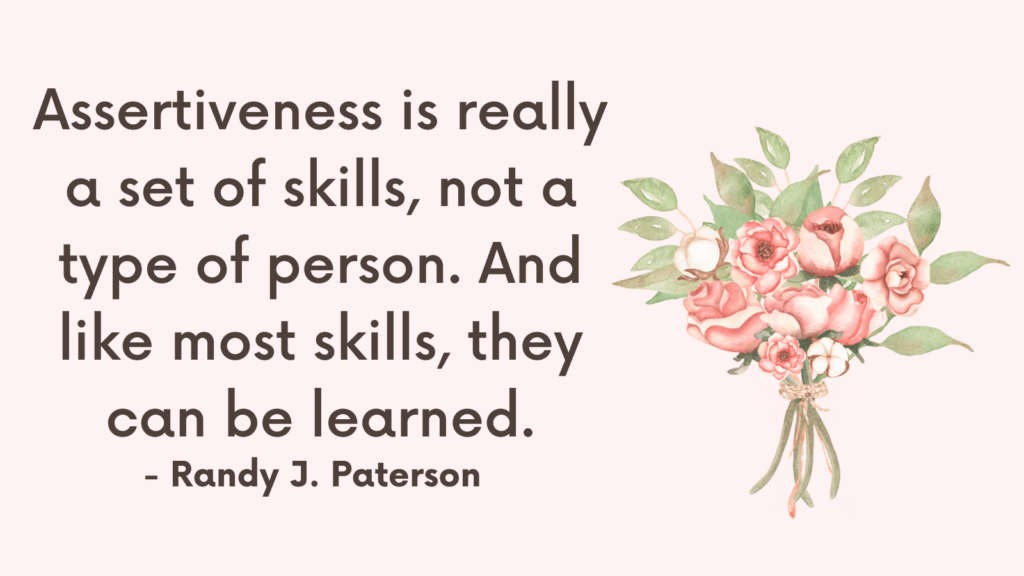In this post, you’re going to learn how to identify and set non negotiable boundaries.
What Are Non Negotiable Boundaries?
Non-negotiable boundaries are essential limits and expectations that individuals establish to safeguard their well-being, values, and personal integrity.
These boundaries are firm, clear, and non-negotiable, meaning they are not open to debate or compromise.
Why Set Non-Negotiable Boundaries
– Non-negotiable boundaries serve as fundamental guidelines for preserving one’s physical, emotional, and mental health.
– They communicate an individual’s core values, needs, and limits, fostering self-respect and accountability in relationships.
– Non-negotiable boundaries can protect individuals from being manipulated, coerced, or subjected to harmful behaviors.
Related: Boundaries vs Ultimatum
Examples of Non-Negotiable Boundaries
1. Zero tolerance for physical violence or abuse: This boundary asserts that any form of physical aggression is unequivocally unacceptable and will not be tolerated under any circumstances.
2. Respect for personal space and privacy: Individuals may establish non-negotiable boundaries regarding their physical space and privacy, clearly communicating the expectation for respect in these areas.
3. Honesty and transparency in communication: A non-negotiable boundary related to communication may stipulate that honesty and transparency are essential components of the relationship, and deceit or manipulation will not be tolerated.
4. Drug and alcohol-free environment: This boundary establishes that substance abuse or intoxication will not be permitted within the individual’s living space or in their presence.
5. Consistent mutual respect: A non-negotiable boundary for maintaining mutual respect in all interactions, emphasizing that disrespectful behavior will not be condoned or overlooked.
These examples illustrate how non-negotiable boundaries address fundamental aspects of safety, respect, and personal integrity.
Related: +100 Examples of Boundary Violations & How to Deal With It
How to Identify and Set Non Negotiable Boundaries?
1. Self-Reflection and Assessment
Begin by engaging in self-reflection to identify personal values, needs, and limits.
Consider past experiences, relationships, and instances where boundaries were violated or compromised.
Assess your emotional, physical, and mental well-being to pinpoint areas where non-negotiable boundaries may be necessary for protection and self-care.
2. Clarify Core Values and Priorities
Identify your core values and priorities, such as respect, honesty, safety, and autonomy.
These values form the foundation for non-negotiable boundaries that align with your personal beliefs and principles.
3. Examine Past Experiences
Reflect on past experiences where your boundaries may have been challenged, disregarded, or violated.
This introspection can reveal patterns and recurring situations that necessitate non-negotiable boundaries.
Related: What Do Boundaries Sound Like? + 35 Boundaries Examples
4. Assess Current Relationships
Evaluate your existing relationships to identify areas where non-negotiable boundaries may be lacking or require reinforcement.
Consider interpersonal dynamics, communication patterns, and instances of discomfort or distress.
5. Identify Areas of Vulnerability
Recognize areas of vulnerability where you feel unsupported, disrespected, or compromised.
Vulnerabilities could stem from emotional triggers, past trauma, or ongoing stressors, highlighting the need for non-negotiable boundaries.
6. Establish Essential Boundaries
Determine non-negotiable boundaries based on critical aspects of your well-being and values.
This may include boundaries related to physical safety, emotional support, privacy, and respect in relationships.
7. Communicate Firm Guidelines
Clearly articulate non-negotiable boundaries to relevant individuals.
Use assertive and empathetic communication to convey the significance of these boundaries and the consequences of violating them.
Related: Boundaries Circle Worksheet (PDF Download)
8. Reinforce Boundaries Consistently
Uphold non-negotiable boundaries consistently, reinforcing their importance through actions and communication.
Avoid compromising these boundaries, as doing so can diminish their effectiveness and impact.
9. Seek Support and Feedback:
Engage with trusted individuals, such as friends, family, or a therapist, to seek feedback and support in the process of identifying and setting non-negotiable boundaries.
External perspectives can offer valuable insights.
10. Evaluate and Adjust Boundaries:
Regularly evaluate the effectiveness of your non-negotiable boundaries and make adjustments as needed.
Life circumstances and interpersonal dynamics may evolve, requiring adaptations to established boundaries.
11. Prioritize Self-Care and Well-being:
Emphasize self-care and well-being as a priority when setting non-negotiable boundaries.
Recognize that these boundaries serve as protective measures to uphold your emotional and psychological health.
Related: Top 19 Journal Prompts For Boundaries
12. Acknowledge Resistance and Challenges:
Anticipate resistance and challenges when establishing non-negotiable boundaries.
It’s essential to remain steadfast in upholding these boundaries, even in the face of pushback or discomfort from others.
13. Set Boundaries with Compassion:
Approach the process of setting non-negotiable boundaries with compassion and empathy.
While these boundaries are firm, they can be communicated and enforced in a manner that preserves the dignity of all individuals involved.
14. Consider Professional Guidance:
If navigating the process of setting non-negotiable boundaries becomes overwhelming or complex, consider seeking guidance from a licensed therapist or counselor.
Professional support can offer tailored strategies and insights.
15. Reflect on Progress and Impact:
Periodically reflect on the progress and impact of your non-negotiable boundaries.
Consider how these boundaries have influenced your relationships, well-being, and overall sense of empowerment.
Related: Top 25 Tips On How To Set Boundaries Without Being Controlling? (+FREE Worksheets PDF)

Conclusion
Identifying and setting non-negotiable boundaries requires introspection, clarity of values, effective communication, consistency, and a commitment to prioritizing personal well-being.
By embracing this process, individuals can cultivate healthier, more respectful relationships and protect their emotional and psychological integrity.



